Business Processes, Information, and Information Systems
1/22
There's no tags or description
Looks like no tags are added yet.
Name | Mastery | Learn | Test | Matching | Spaced |
|---|
No study sessions yet.
23 Terms
Viewing a firm as a system
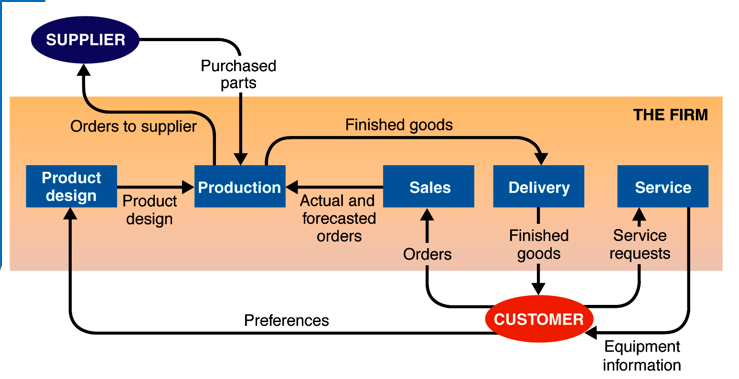
Business Process
A network of
activities, (process)
resources, (input)
facilities, and (inputs)
information (both inputs and outputs) that interact to achieve some business function.
must work together as an integrated system
Related group of activities that use people, information and other resources to create value for internal and external users.
is a related group of steps or activities that use people, information, and other resources to create value for internal or external customers.
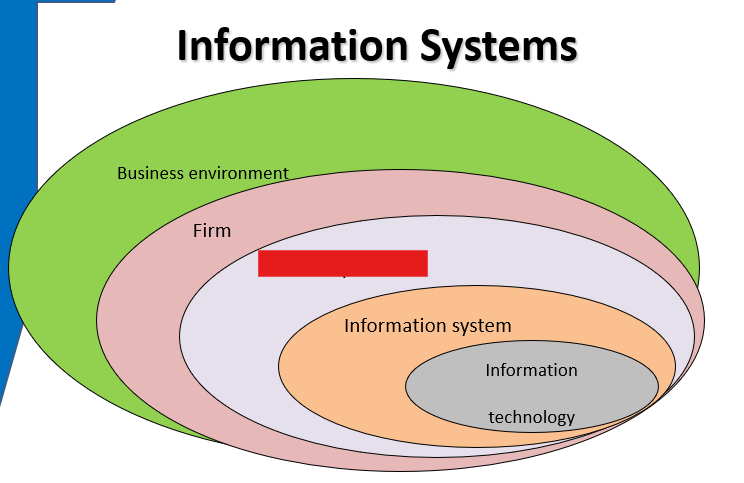
Business processes and Functional areas of business
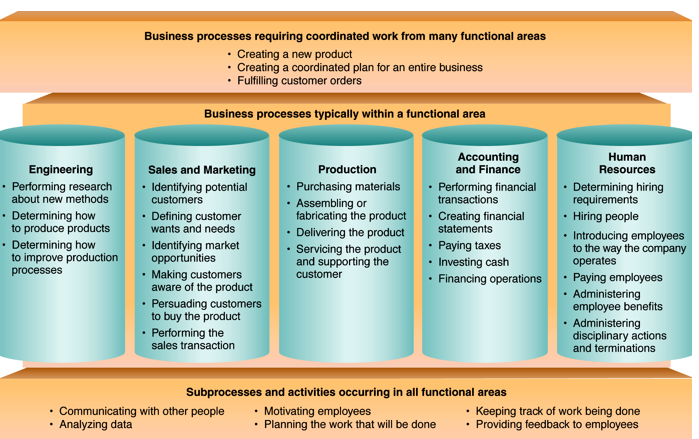
Portion of Inventory Management Business Process
Purchasing (activity) queries Inventory Database (facility) and obtains QuantityOnHand (information)
If reorder needed, Purchasing generates Order (information) to Supplier (resource)
Order Placement (activity) sends copy to Receiving (activity)
Receiving puts goods into Inventory (facility)
Record (Info) sent to Inventory Database (facility) and Payment (activity)
Supplier sends ShippingInvoice (info) to Payment
ShippingInvoice compared to Order, generates Check (info and resource)
Counter Sales (activity) interacts with Customer (resource), Inventory (resource), and Inventory Database (facility)
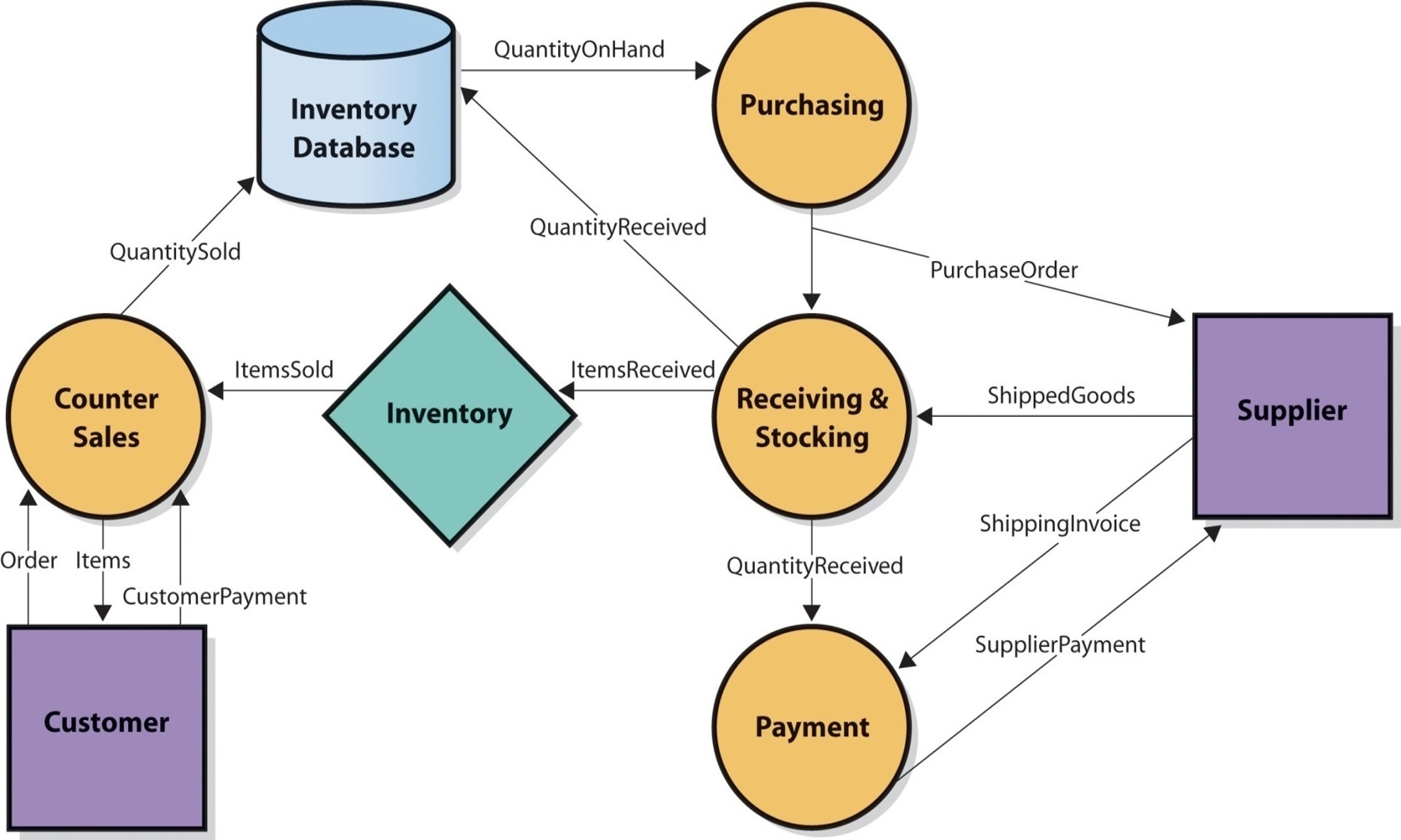
Activities
Transform resources and information from one form into another
Follow rules and procedures
Can be manual, automated, or combination
component of a business process
transform resources and information of one type into resources and information of another type.
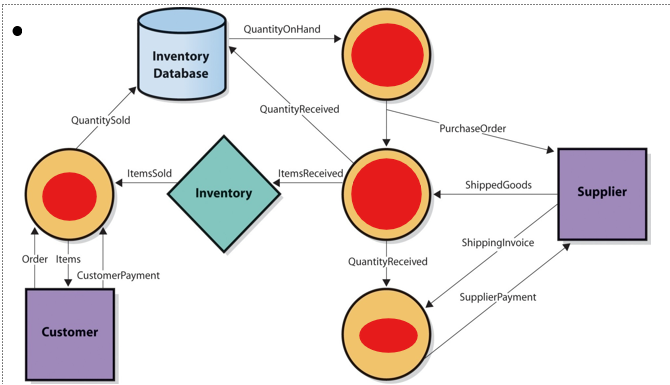
Resources
item of value
external to organization
component of a business process
items of value:
customers,
suppliers,
employees,
distributors, and so on

Facilities
Structures used within business process
Places where things are produced or stored, or equipment, machines, buildings
ex:
Factories
Equiptment
Component of a business process
structures used within resources.
inventories
databases

Information
Used by activities
Determines how to transform inputs into outputs
Business processes generate (answer) by giving context to data:
Process gives context to data
May turn low-level information into high-level information
activities use (answer) to know how to transform inputs to outputs

Automation of processes
Transfers work done by people to computers
People follow procedures (instructions)
Computers follow software instructions
Fully Automated
Cashiers do not require extensive training
Cashiers do not work directly with programs on computer
Computer in cash register communicates with computer connected to the Inventory Database
Ex:
McDonald’s new drive-up window technology
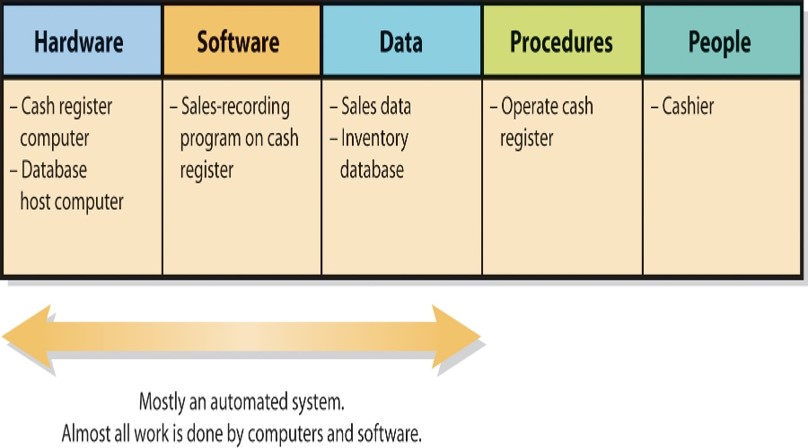
Manual
Accounts Payable Clerk reads documents and issues payment or investigates discrepancies
Processing exceptions complicated
Programming expensive
Probably not effective
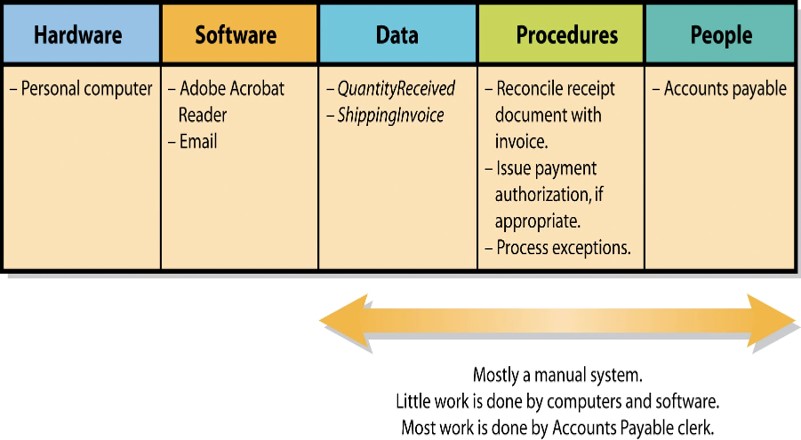
Manual and Automated process
Balance work
Searching database is repetitive
(answer) process
Selecting suppliers is complicated
(answer) process
combination
Order Approval Process
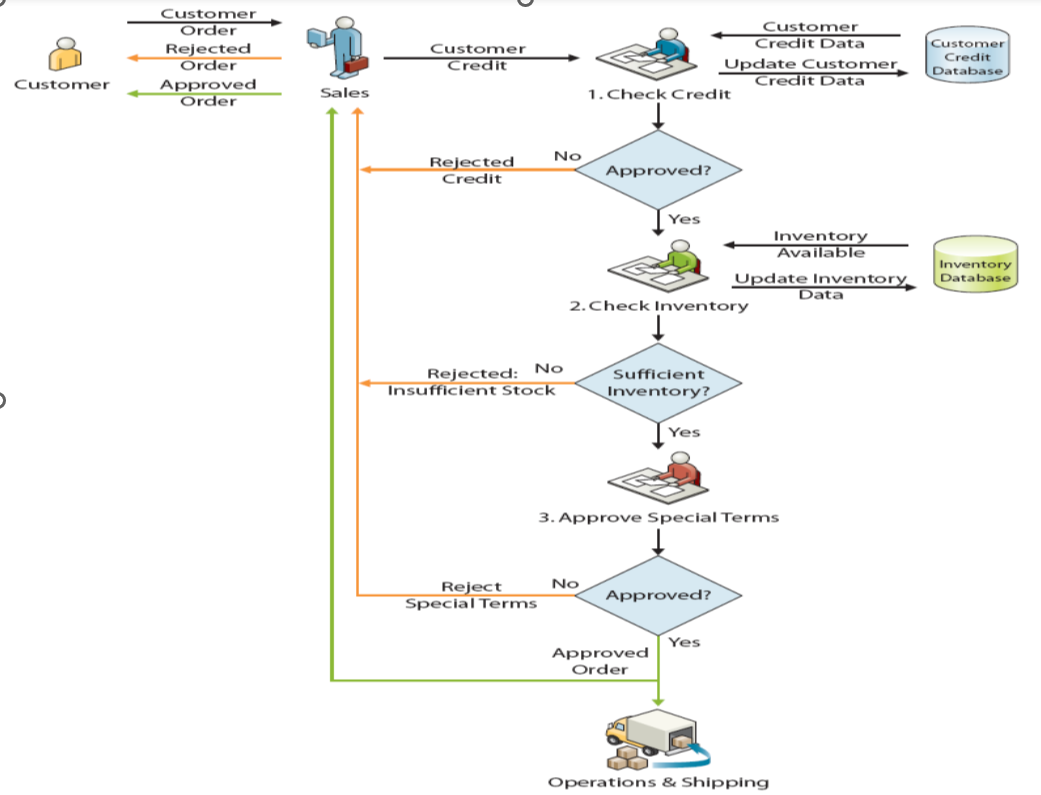
Framework
Brief set of ideas for organizing thought process about a particular type of thing or situation
Models
Simplified representations of reality
System
A set of interacting components that operate together to accomplish a purpose
System Properties
A system has
Purpose
Boundary
Environment
Inputs
Outputs
Work System
A system in which humans perform a business process using information, technology, and other resources to produce products for internal or external customers.
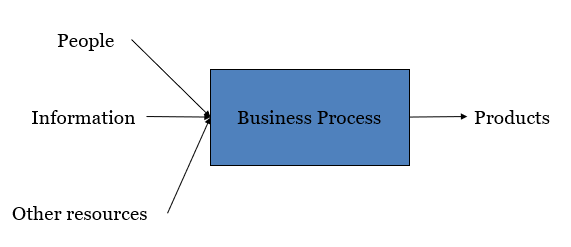
Value Chain
Set of processes a firm uses to create value for its customers
A process’s value added is the amount of value it creates for its internal and external customer
Information Technology
the hardware and software that make information systems possible.
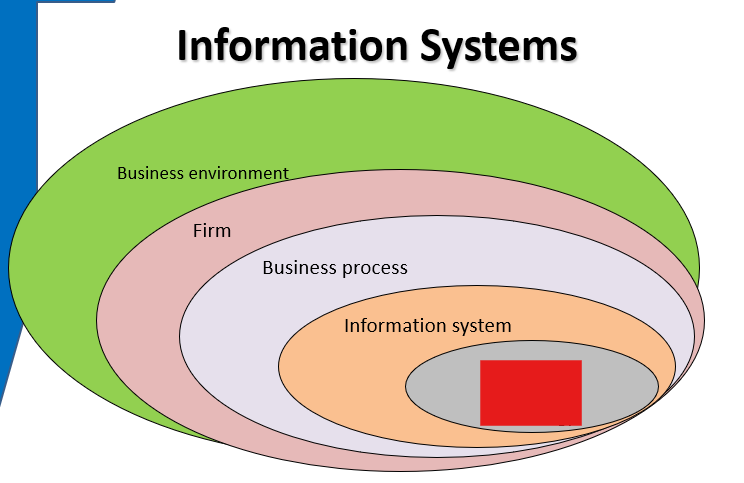
Information System
a system that uses information technology to capture, transmit, store, retrieve, manipulate, or display information used in one or more business processes.
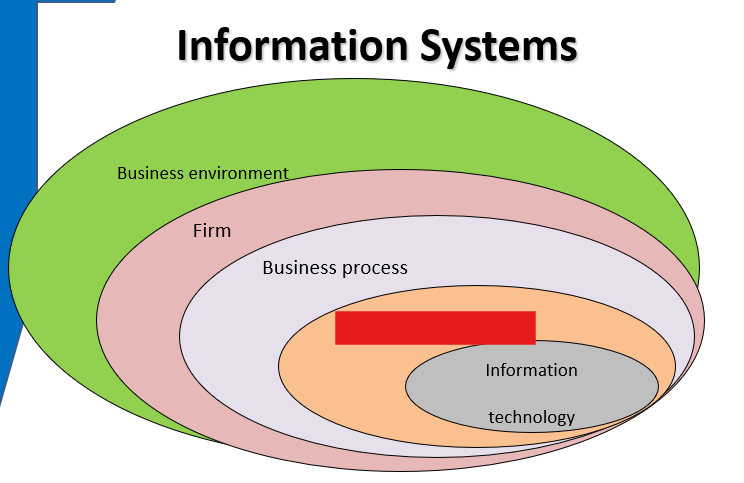
Firm
consists of a large number of interdependent business processes that work together to generate products or services in a business environment.
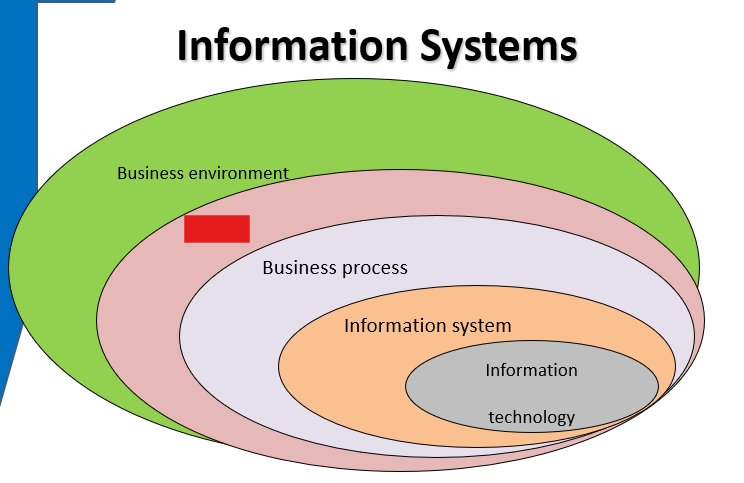
Business Environment
includes the firm itself and everything else that affects its success, such as competitors, suppliers, customers, regulatory agencies, and demographic, social and economic conditions.
